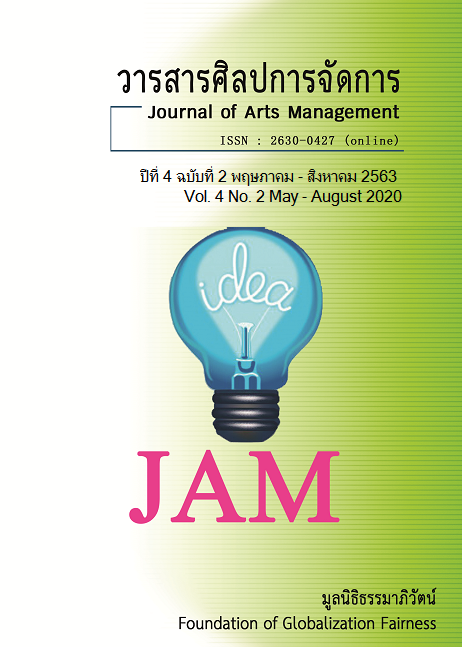Public Mental Development of Village Health Volunteers According To the Principle Buddhist Psychology
Main Article Content
Abstract
This Article aimed to study the effects of a public mind development process according to Buddhist psychology principles of the volunteers from the village public health. It is a mixed method research. The population is 100 village health volunteers. The sample groups were selected by simple random sampling. They were divided into two groups, the experimental group and the control group consisting of 30 students each. The research instruments were 1) a public mind development process for the volunteers from the public health according to Buddhist psychology. 2) Questionnaire for measuring public mind created by the researcher was tested the instrument quality, content validity by 5 experts. The qualitative data was analyzed by content analysis. Statistics used for quantitative data analysis consisted of percentage, mean, standard deviation, t-test and One-way ANOVA.
The results of the research found that the effects of using public mind process for the volunteers from public health according to Buddhist psychology with comparing the average score found that 1) before the experiment, the sample group had the same public mind on thought and behavior between the experimental group and the control group. 2) Post-experiment and follow-up phase, the average score of public mind on thought and behavior between the experimental group and the control group was different with statistical significance at the level of .05. The average score of public mind on thought and behavior of the experimental group was higher than the control group. 3) The average score of public mind on thought and behavior before, after, and follow up in the experimental group were different with the statistical significant at the level of .05. Different pairs, the average score of public mind on thought and behavior, the post test score was higher than pretest with statistical significant at the level of .05. The mean of post test and follow - up phase were not different. 4) The average score of public mind on thought and behavior, before, after and flow-up the experiment in the control group were not different.
Article Details
Views and opinions appearing in articles in the Journal of Arts of Management It is the responsibility of the author of the article. and does not constitute the view and responsibility of the editorial team I agree that the article is copyright of the Arts and Management Journal.
References
จันทิรา ธนสงวนวงศ์. (2559). จิตสาธารณะ. [ออนไลน์]. สืบค้น 20 ตุลาคม 2559 จาก http://mos.e-tech.ac.th/mdec/learning/s1301/unit08.html
ธนิดา ทองมีเหลือ และคณะ. (2550). ปัจจัยทางจิตสังคมที่ส่งผลต่อจิตสาธารณะของนิสิตมหาวิทยาลัยศรีนครินทรวิโรฒ. วารสารพฤติกรรมศาสตร์, 13, 91-102.
พระก๋อมสอร์ท โชติรกขิโต (สวน) (2552). การศึกษาลักษณะจิตในพุทธศาสนาเถรวาทกรณีศึกษานิสิตปฏิบัติศาสนกิจมหาวิทยาลัยมหาจุฬาลงกรณราชวิทยาลัย. (วิทยานิพนธ์พุทธศาสตรมหาบัณฑิต สาขาชีวิตและความตาย). บัณฑิตวิทยาลัย มหาวิทยาลัยมหาจุฬาลงกรณราชวิทยาลัย.
ลำพอง กลมกูล. (2554). อิทธิพลของกระบวนการสะท้อนคิดต่อประสิทธิผลการวิจัยปฏิบัติการในชั้นเรียน: การวิจัยแบบผสมวิธี. (วิทยานิพนธ์ครุศาสตรดุษฎีบัณฑิต). ภาควิชาวิจัยและจิตวิทยาการศึกษา, จุฬาลงกรณ์มหาวิทยาลัย.
สรชัย พิศาลบุตร. (2556). การสร้างและประมวลผลข้อมูลจากแบบสอบถาม. กรุงเทพฯ: วิทยพัฒน์.
สรณีย์ สายศร. (2550). การบูรณาการหลักการทางพุทธศาสนาในการทำงานจิตอาสา. (วิทยานิพนธ์ครุศาสตร์ดุษฎีบัณฑิต สาขาวิชาพัฒนศึกษา). บัณฑิตวิทยาลัย จุฬาลงกรณ์มหาวิทยาลัย.
สำนักคณะกรรมการการศึกษาขั้นพื้นฐาน. (2554). แนวทางการบริหารจัดการเรียนรู้ สู่ประชาคมอาเซียน. กรุงเทพฯ: สำนักวิชาการและมาตรฐานการศึกษา.
สำนักราชเลขาธิการ. (2559). พระบาทสมเด็จพระเจ้าอยู่หัวฯ ในการเสด็จออกสมาคมในงานงานพิธีฉลองศิริราชสมบัติครบ 60 ปี ณ พระที่นั่งอนันตสมาคม วันที่ 9 มิถุนายน 2559. สืบค้น 13 ตุลาคม 2559 จาก http//ohmpps.go.th/prabrachoeat.php?id_head=4&cg_id =120.


